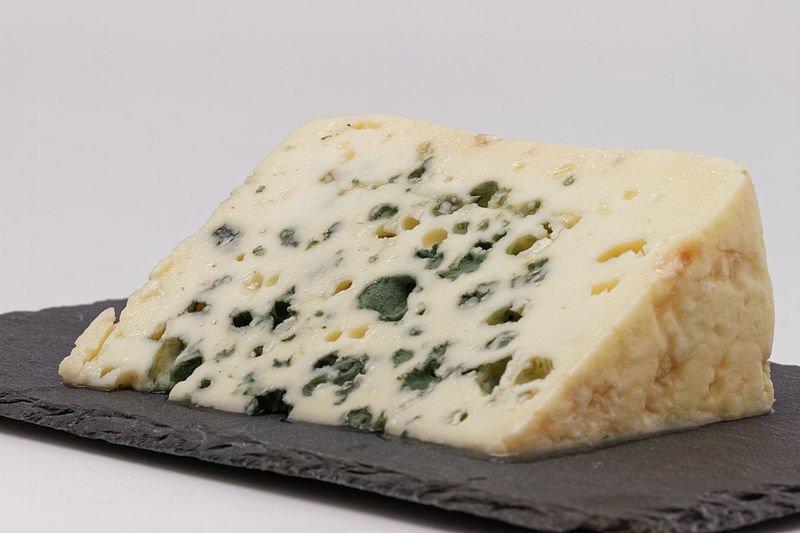There are many kinds of blue cheeses being produced but Roquefort is considered as the most famous blue cheese in France. It is reported to be a favorite of Emperor Charlemagne and is also referred to as the cheese of kings and popes. Let us know more about the history of Roquefort cheese and its characteristics.
History of Roquefort Cheese
It was in 1070 when Roquefort was first mentioned in the context of the Carolingian period. Its reputation extended to the Mediterranean regions at the end of the Middle Ages, particularly in Toulouse, Marseille, and Montpellier.
In the 15th century, during the reign of Charles VI, the refining of cheese was monopolized in Roquefort and the caves were granted a protected status. And in 1666, under the reign of Charles VII, the people of Roquefort were granted another privilege when the Parliament of Toulouse voted a decree which allowed sanction for the producers of fake Roquefort cheese.
The French philosopher Diderot attributes the title “King of Cheeses” to Roquefort cheese during the Age of the Enlightenment. In the 20th century, Roquefort cheese became internationally renowned. It was also the first cheese to be granted the title Appellation d’Origine or label of origin guarantee in 1925. This label was then confirmed on an international level in 1951 at the International Convention of Stresa.
In the present time, Roquefort is recognized throughout Europe as an Appellation d’Origine Protegee or a protected label of origin.
There’s also a legend about Roquefort cheese that tells of an ardent young shepherd, perched on the Combalou plateau who spied a beautiful shepherdess from afar. He hastily left his flock determined to woo her but not before placing his meal which was ewe’s milk curds on rye bread in a nearby cave, damp and cool.
The shepherd spent days searching for the shepherdess but it was hopeless. He just went back to his leftover lunch but it hardly looked like the meal he abandoned because mold blanketed the bread and there were deep green veins marbled at the curds. But because he was starving, he tasted the moldy cheese and he was surprised that it tasted good. And that was how Roquefort was born based on the legend.
Characteristics of Roquefort Cheese
Roquefort is a moist cheese and it can break into little pieces easily. You will be able to know if it is genuine when it’s rich, creamy, and sharp, and has a tangy and salty flavor. The mold that gives its character is Penicillium roqueforti. It was used to treat gangrene long before Alexander Fleming isolated penicillin.
There were less than 700 people in Roquefort-sur-Soulzon, but 4,500 work there to produce Roquefort cheese. The cheese should be made of ewes’ milk delivered at least 20 days after lambing. Each year, there are about three million wheels of Roquefort cheese produce. Each wheel of the cheese can weigh between 2.5 to 3 kilograms and they are about 10 cm thick.
Roquefort Cheese Pairings
Roquefort cheese is mostly used in salads and dressings. But you can also serve it as snacks and pair it with wines such as Port, Bordeaux, Cabernet Sauvignon, and Meritage. It also goes well with sweet wines because it is a rich and aromatic cheese.
Roquefort is another great cheese that has been made for centuries but is still one of the most popular cheeses today. It is indeed a must-try for all cheese lovers out there.

